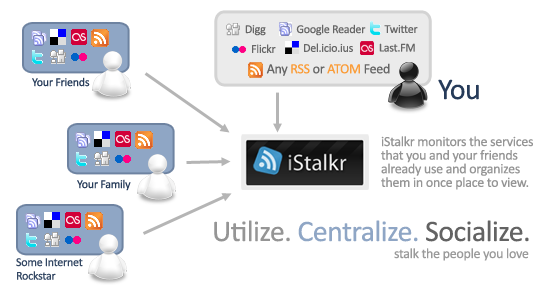Get a lifestream

With the explosion of the social web, it's becoming increasingly common for each of our online activities -- such as uploading a photo, publishing a blog entry, bookmarking a web page, or listening to music -- to leave its own digital trail (usually in the form of a timestamped RSS feed). The problem is that each trail lives in a different location on the net. However, a number of web services exist which make it possible to aggregate this data, to display a chronological view of a user's online activities -- a concept commonly referred to as 'Lifestreaming'.
iStalkr
iStalkr, which is currently in Beta, pulls in the RSS or Atom feeds of popular social web services such as Digg, Delicious, Flickr, Last.fm, and Tumblr -- or, in fact, any publicly viewable feed -- to create a visual time line of a user's activities which can then be published onto a blog or elsewhere on the web. Additionally, a user can monitor their friends' time lines.

Jaiku
If you're interested in finding our more about lifestreaming, check out The Lifestream blog, written by Mark Krynsky.
Related post: Spokeo, a social network aggregator